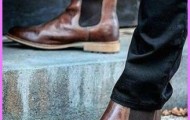To make up a pram or cot
Cover the lower three quarters of mattress with rubber sheet. Now cover the whole mattress with sheet or use a twillback nappy (see nappies p. 30). A folded twillback nappy can also be placed over the sheet across the head end as most babies posset a little milk after a feed, and it is easier to slip a damp nappy out from under the babys head than to change the sheet without disturbing her. Lying on a damp patch for even a short time can give your baby a rash so stretch a one-way fabric nappy liner under the head area well, tucking and pinning securely under the mattress.
Never use a pillow for a baby or young child. Even a safety pillow can smother, so avoid altogether.
Wrapping blankets or sheets can be used to cover the baby, followed by a blanket or two if necessary.
Fitted cot sheet
You need: One flat cot sheet or rectangle of fabric large enough to cover sides and surface of cot mattress with about 6 cm at underside. Towelling, Viyella or a remnant from a worn full-size sheet (especially nice for its many-times-washed softness) are suitable. If using fabric, allow 1,5 cm extra all round for turning – a cot sheet will already be hemmed. Narrow elastic to fit around underside of mattress, and matching thread.
1 Lay flat sheet or fabric over mattress right side facing down. Fold up and pin at corners as shown. Machine down at corners and trim off surplus fabric to within 1,5 cm of stitching. Neaten raw edges by hand or with machine zig-zag stitch.
2 If converting a flat sheet, turn a single hem to wrong side and machine down to make casing for elastic. Leave opening at one corner. If using a rectangle of fabric, turn and machine a double hem for casing. Thread elastic through casing, pin ends temporarily and try on mattress.
3 Remove, secure elastic ends and sew up opening. Elasticated hem should be tight enough to let the sheet fit comfortably around the mattress with no pulling.
You can buy or make a bumper to pad the inside of the cot with, to make it cosier when the baby is small and prevent the child from bumping her head against the slats.
A net to cover the pram or cot is handy if you have a cat and to protect against flies and insects.
Baby chairs. A baby chair is an optional item that can be very useful. One kind is made from plastic and can be carried around easily, but is only suitable for very young babies. The child sits in a slumped position because the plastic does not mould to the shape of the body. The fabric-covered type on a chrome frame is much better. It can be taken from room to room and the baby lies in a more suitable position. It is also a good way of keeping your baby with you when you are busy and the upright position helps get the winds up and stops a lot of the posseting or spitting up of milk that is common after a feed.
Baby carriers. A baby carrier or sling which you wear on your back, side or front is an excellent way of keeping your baby near you while leaving your hands free. Choose a type that has good support and will not cut into your shoulders when it has a weight in it. The baby should be well supported especially at the head. Some carriers have a detachable headpiece that can be taken off when the baby is able to hold her head up by herself.
High chairs. High chairs are useful from around six months when the baby is able to sit properly. Although not a necessity, they can be useful. Make sure the chair does not overbalance easily even if the child stands up, and most importantly, it should have a harness to strap the baby (you can buy these separately). Some high chairs can be converted into a low chair with a tray or table. If your baby gets used to having her meals in her high chair it can make things easier for you as she will not be able to run around at mealtimes. You can also draw the high chair up to the table so that she can be with the family at mealtimes.
Maybe You Like Them Too
- 50 Unique Travel Destinations You Must Visit Before You Die
- Tamar Braxton A Life in Music
- Sunny Hostin A Biography
- Steve Coogan A Life in Comedy
- Sterling K Brown A Biography



